Fused Multi-Domains and Adaptive Variational Mode Decomposition ECG Feature Extraction for Lightweight Bio-Inspired Key Generation and Encryption
Abstract
1. Introduction
2. Literature Review
2.1. Model-Based and Multi-Fusion Domain Bio-Signals Techniques
2.2. Lightweight Encryption Mechanisms
3. Materials and Methods
3.1. Loading of the ECG Signal Dataset
3.2. Preprocess ECG Signal
3.3. ECG Extract Features
3.4. Statistical Analysis
3.5. Bio-Inspired Key Generation
3.6. Algorithm to Implement Lightweight Encryption
| Algorithm 1: ECG signal Preprocessing | |
| 1. | Input: raw ECG signal, , , |
| 2. | Compute: using Equation (1) |
| 3. | Compute: using Equation (2) |
| 4. | Compute: using Equation (3) |
| 5. | Output: Preprocessed ECG signal |
| Algorithm 2: Feature Extraction | |
| //data-adaptive variational model decomposition | |
| 1. | Compute: x(t) using Equation (4) |
| 2. | Compute: using Equation (6) to compute the objective function and likelihood of error in mode reconstruction |
| 3. | Compute: , |
| 4. | Compute: discrete Fourier transform (DFT) signal using Equation (11) |
| 5. | Compute: using Equation (15) |
| 6. | Compute: using Equation (16) |
| 7. | Compute: ZCR using Equation (17) |
| 8. | Output: fused feature vector |
| Algorithm 3: Fused feature vector and bio-inspired key generation | |
| 1. | Initialize population: |
| 2. | Generate Unique key for the feature vector in the string representation |
| 3. | Generate: random key using Half-life |
| 4. | Generate: Fkey |
| 5. | Output: Fkey |
| 6. | Apply: Fkey with the Chacha20 encryption scheme as expressed by Equations (28) and (29). |
4. Results
5. Discussion
6. Conclusions
Author Contributions
Funding
Institutional Review Board Statement
Informed Consent Statement
Data Availability Statement
Conflicts of Interest
References
- Karimian, N.; Guo, Z.; Tehranipoor, M.; Forte, D. Highly reliable key generation from electrocardiogram (ECG). IEEE Trans. Biomed. Eng. 2016, 64, 1400–1411. [Google Scholar] [CrossRef] [PubMed]
- Aziz, S.; Hayat, M.M.; Naqvi, S.Z.H.; Furqan, M.; Khan, M.U.; Zahid, M.Z. Electrocardiography based Biometric Verification System. In Proceedings of the 2020 International Conference on Electrical, Communication, and Computer Engineering (ICECCE), Istanbul, Turkey, 12–13 June 2020. [Google Scholar]
- Neri, L.; Oberdier, M.; van Abeelen, K.; Menghini, L.; Tumarkin, E.; Tripathi, H.; Jaipalli, S.; Orro, A.; Paolocci, N.; Gallelli, I.; et al. Electrocardiogram Monitoring Wearable Devices and Artificial-Intelligence-Enabled Diagnostic Capabilities: A Review. Sensors 2023, 23, 4805. [Google Scholar] [CrossRef] [PubMed]
- Asim, M.; Akhtar, M.; Faraz, M.; Khan, M.U.; Aziz, S.; Montes, G.A. Pattern Analysis for Biometric Authentication using Electrocardiogram Signal. In Proceedings of the 2023 2nd International Conference on Emerging Trends in Electrical, Control, and Telecommunication Engineering (ETECTE), Lahore, Pakistan, 27–29 November 2023. [Google Scholar]
- Shuma, M.; Madhumathy, P. Brakerski-Gentry-Vaikuntanathan fully homomorphic encryption cryptography for privacy preserved data access in cloud assisted internet of things services using glow-worm swarm. Trans. Emerg. Telecommun. Technol. 2022, 33, e4641. [Google Scholar] [CrossRef]
- Lin, Y.; Xie, Z.; Chen, T.; Chen, X.; Wen, H. Image privacy protection scheme based on high-quality reconstruction DCT compression and nonlinear dynamics. Expert Syst. Appl. 2024, 257, 124891. [Google Scholar] [CrossRef]
- Karpagachelvi, S.; Arthanari, M.; Sivakumar, M. ECG Feature Extraction Techniques—A Survey Approach. (IJCSIS) Int. J. Comput. Sci. Inf. Secur. 2010, 8, 1–5. [Google Scholar]
- Pirbhulal, S.; Zhang, H.; Mukhopadhyay, S.C.; Li, C.; Wang, Y.; Li, G.; Wu, W.; Zhang, Y.-T. An Efficient Biometric-Based Algorithm Using Heart Rate Variability for Securing Body Sensor Networks. Sensors 2015, 15, 15067–15089. [Google Scholar] [CrossRef]
- Kumar, S.; Vaishali, K.; Maiya, G.; Shivashankar, K.N.; Shashikiran, U. Analysis of time-domain indices, frequency domain measures of heart rate variability derived from ECG waveform and pulse-wave-related HRV among overweight individuals: An observational study. F1000Research 2023, 12, 1229. [Google Scholar] [CrossRef]
- Escribano, P.; Ródenas, J.; García, M.; Arias, M.A.; Hidalgo, V.M.; Calero, S.; Rieta, J.J.; Alcaraz, R. Combination of frequency-and time-domain characteristics of the fibrillatory waves for enhanced prediction of persistent atrial fibrillation recurrence after catheter ablation. Heliyon 2024, 10, e25295. [Google Scholar] [CrossRef]
- Zhao, L.; Li, J.; Ren, H. Multi domain fusion feature extraction and classification of ECG based on PCA-ICA. In Proceedings of the 2020 IEEE 4th Information Technology, Networking, Electronic and Automation Control Conference (ITNEC), Chongqing, China, 12–14 June 2020. [Google Scholar]
- Bao, Z.; Yan, L.; Wang, M. Multi-feature Fusion ECG Signal Recognition Algorithm Based on VMD. In Proceedings of the 2022 4th International Conference on Natural Language Processing (ICNLP), Xi’an, China, 25–27 March 2022. [Google Scholar]
- Bazhutina, A.; Khamzin, S.; Sinitca, A.; Chmelevsky, M.; Zubarev, S.; Budanova, M.; Rainer, W. An Ensemble of Machine Learning Models for Multilabel Classification of Cardiovascular Diseases by ECGs. In Proceedings of the 2023 Computing in Cardiology (CinC), Atlanta, GA, USA, 1–4 October 2023. [Google Scholar]
- Buyya, A.; Ogeti, T.; Suhas, G.; Kashapogula, P.; Panigrahy, A.K. Arrhythmias Classification by using STFT-based Spectrograms, Transfer Learning and Concatenation of features. In Proceedings of the 2023 4th International Conference for Emerging Technology (INCET), Belgaum, India, 26–28 May 2023. [Google Scholar]
- Choudhary, S.K.; Sandee, B. Real Time Biometric Authentication System Using ECG. In Proceedings of the 2023 14th International Conference on Computing Communication and Networking Technologies (ICCCNT), Delhi, India, 6–8 July 2023. [Google Scholar]
- Choudhary, T.; Das, M.; Sharma, L.N.; Bhuyan, M.K. A Non-Fiducial Noise Robust VMD-based Framework for ECG-based Biometric Recognition. In Proceedings of the 2021 IEEE 18th India Council International Conference (INDICON), Guwahati, India, 19–21 December 2021. [Google Scholar]
- Pradhan, B.K.; Neelappu, B.C.; Sivaraman, J.; Kim, D.; Pal, K. A Review on the Applications of Time-Frequency Methods in ECG Analysis. J. Healthc. Eng. 2023, 34, 3145483. [Google Scholar] [CrossRef]
- Anjitha, P.; Dhanya, K.R.; Sindhu, N.; Jerritta, S. The Untapped Potential of Feature Selection for Emotion Recognition: Literature Review. In Proceedings of the 2020 International Conference on Power, Instrumentation, Control and Computing (PICC), Thrissur, India, 17–19 December 2020. [Google Scholar]
- He, W.; Ye, Y.; Pan, T.; Meng, Q.; Li, Y. Emotion Recognition from ECG Signals Contaminated by Motion Artifacts. In Proceedings of the 2021 International Conference on Intelligent Technology and Embedded Systems (ICITES), Chengdu, China, 31 October 2021–2 November 2021. [Google Scholar]
- Ihsan, M.F.; Mandala, S.; Pramudyo, M. Study of Feature Extraction Algorithms on Photoplethysmography (PPG) Signals to Detect Coronary Heart Disease. In Proceedings of the 2022 International Conference on Data Science and Its Applications (ICoDSA), Bandung, Indonesia, 6–7 July 2022. [Google Scholar]
- Khan, M.U.; Aziz, S.; Naqvi, S.Z.H.; Zaib, A.; Maqsood, A. Pattern Analysis Towards Human Verification using Photoplethysmograph Signals. In Proceedings of the 2020 International Conference on Emerging Trends in Smart Technologies (ICETST), Karachi, Pakistan, 26–27 March 2020. [Google Scholar]
- Omar, N.; Dey, M.; Ullah, M.A. Detection of Myocardial Infarction from ECG Signal Through Combining CNN and Bi-LSTM. In Proceedings of the 2020 11th International Conference on Electrical and Computer Engineering (ICECE), Dhaka, Bangladesh, 17–19 December 2020. [Google Scholar]
- Khan, M.U.; Saad, M.; Aziz, S.; Ch, J.M.; Naqvi, S.Z.H.; Qasim, M.A. Electrocardiogram based Gender Classification. In Proceedings of the 2020 International Conference on Electrical, Communication, and Computer Engineering (ICECCE), Istanbul, Turkey, 12–13 June 2020. [Google Scholar]
- Mahmud, M.S.; Nayan, M.M.R.; Hasan, S.; Taj, M.N.A. A Deep Ensemble Model with an Efficient Feature for Multi-class Arrhythmia Classification Utilizing 12-Lead ECG Signal. In Proceedings of the 2022 12th International Conference on Electrical and Computer Engineering (ICECE), Dhaka, Bangladesh, 21–23 December 2022. [Google Scholar]
- Nijaguna, G.S.; Lal, N.D.; Divakarachari, P.B.; Prado, R.P.d.; Woźniak, M.; Patra, R.K. Feature Selection Using Selective Opposition Based Artificial Rabbits Optimization for Arrhythmia Classification on Internet of Medical Things Environment. IEEE Access 2023, 11, 100052–100069. [Google Scholar] [CrossRef]
- Chen, L.; Zhang, C.; Gao, X. Speech Signal Analysis of Autistic Children Based on Time-Frequency Domain Distinguishing Feature Extraction. In Proceedings of the 2022 IEEE 34th International Conference on Tools with Artificial Intelligence (ICTAI), Macao, China, 31 October 2022–2 November 2022. [Google Scholar]
- Kuznetsov, I.V. Movements Classification Based on Surface Electromyography Using Time-frequency Domain Features. In Proceedings of the 2024 XXVII International Conference on Soft Computing and Measurements (SCM), Saint Petersburg, Russian, 22–24 May 2024. [Google Scholar]
- Singh, A.K.; Krishnan, S. ECG signal feature extraction trends in methods and applications. BioMed. Eng. OnLine 2023, 22, 22. [Google Scholar] [CrossRef] [PubMed]
- Alyasseri, Z.A.A.; Al-Betar, M.A.; Awadallah, M.A.; Makhadmeh, S.N.; Alomari, O.A.; Abasi, A.K.; Doush, I.A. EEG Feature Fusion for Person Identification Using Efficient Machine Learning Approach. In Proceedings of the 2021 Palestinian International Conference on Information and Communication Technology (PICICT), Gaza, Palestine, 28–29 September 2021. [Google Scholar]
- Khushaba, R.N.; Al-Timemy, A.H.; Samuel, O.W.; Scheme, E.J. Myoelectric Control with Fixed Convolution-Based Time-Domain Feature Extraction: Exploring the Spatio–Temporal Interaction. IEEE Trans. Hum. Mach. Syst. 2022, 52, 1247–1257. [Google Scholar] [CrossRef]
- Khushaba, R.N.; Phinyomark, A.; Al-Timemy, A.H.; Scheme, E. Recursive Multi-Signal Temporal Fusions With Attention Mechanism Improves EMG Feature Extraction. IEEE Trans. Artif. Intell. 2020, 1, 139–150. [Google Scholar] [CrossRef]
- Jiang, K.; Wang, Z.; Shen, R.; Wang, S.; Liu, Y.; Feng, Y.; Lisun, X.; Li, Z. A Neurological Recovery Prediction Algorithm Based on Multi-Feature Extraction and Bagging Aggregation. In Proceedings of the 2023 Computing in Cardiology (CinC), Atlanta, GA, USA, 1–4 October 2023. [Google Scholar]
- Kherdekar, V.A.; Naik, S.A. Feature Fusion Extraction Method for Improvement of Recognition of Continuous Speech: A Feature Fusion Method for Recognition of Continuous Speech. In Proceedings of the 2024 Fourth International Conference on Advances in Electrical, Computing, Communication and Sustainable Technologies (ICAECT), Bhilai, India, 11–12 January 2024. [Google Scholar]
- Jain, R.; Garg, V.K. An Efficient Feature Extraction Technique and Novel Normalization Method to Improve EMG Signal Classification. In Proceedings of the 2022 3rd International Conference on Intelligent Engineering and Management (ICIEM), London, UK, 27–29 April 2022. [Google Scholar]
- Premkumar, S.; Mohana, J. An efficient method for Secure ECG Feature Based Cryptographic Key Generation. In International Journal of Innovative Technology and Exploring Engineering (IJITEE); Blue Eyes Intelligence Engineering & Sciences Publication: Bhopal, India, 2019. [Google Scholar]
- Mathivanan, P.; Ganesh, A.B.; Venkatesan, R. QR code–based ECG signal encryption/decryption algorithm. Cryptologia 2019, 43, 233–253. [Google Scholar] [CrossRef]
- Karthikeyan, M.J.; Martin Leo Manickam, A. 128-Bit secret key generation using unique ECG Bio-signal for medical data cryptography in lightweight wireless body area networks. J. Biotechnol. 2017, 14, 257–264. [Google Scholar]
- Rahman, M.S.; Khalil, I.; Yi, X. Reversible Biosignal Steganography Approach for Authenticating Biosignals using Extended Binary Golay code. IEEE J. Biomed. Health Inform. 2020, 25, 35–46. [Google Scholar] [CrossRef]
- Garcia-Baleon, H.A.; Alarcon-Aquino, V.; Starostenko, O. A Wavelet-Based 128-bit Key Generator Using Electrocardiogram Signals. In 2009 52nd IEEE International Midwest Symposium on Circuits and Systems; IEEE: Piscataway, NJ, USA; pp. 644–647.
- Radhakrishnan, I.; Jadon, S.; Honnavalli, P.B. Efficiency and Security Evaluation of Lightweight Cryptographic Algorithms for Resource-Constrained IoT Devices. Sensors 2024, 24, 4008. [Google Scholar] [CrossRef]
- Kebande, V.R. Extended-Chacha20 Stream Cipher with Enhanced Quarter Round Function. IEEE Access 2023, 18, 114220–114237. [Google Scholar] [CrossRef]
- Pirbhulal, S.; Zhang, H.; Wu, W.; Mukhopadhyay, S.C.; Zhang, Y.-T. Heart-Beats Based Biometric Random Binary Sequences Generation to Secure Wireless Body Sensor Networks. IEEE Trans. Biomed. Eng. 2018, 65, 2751–2759. [Google Scholar] [CrossRef]
- Khokher, R.; Singh, R.C. Generation of Security Key using ECG Signal. In Proceedings of the International Conference on Computing, Communication and Automation (ICCCA2015), Greater Noida, India, 15–16 May 2015; pp. 1–6. [Google Scholar]
- Viand, A.; Jattke, P.; Hithnawi, A. SoK: Fully Homomorphic Encryption Compilers. In Proceedings of the 2021 IEEE Symposium Conf. on Security and Privacy (SP), IEEE Computer Society, San Francisco, CA, USA, 24–27 May 2021; pp. 1092–1108. [Google Scholar]
- Moosavi, S.R.; Nigussie, E.; Virtanen, S.; Isoaho, J. Cryptographic Key Generation Using ECG Signal. In Proceedings of the 2017 14th IEEE Annual Consumer Communications & Networking Conference (CCNC), Las Vegas, NV, USA, 8–11 January 2017; pp. 1–8. [Google Scholar]
- Hwang, H.B.; Lee, J.; Kwon, H.; Chung, B.; Lee, J.; Kim, Y. Preliminary Study of Novel Bio-Crypto Key Generation Using Clustering-Based Binarization of ECG Features. Sensors 2024, 24, 1556. [Google Scholar] [CrossRef]
- Karthikeyan, M.; Manickam, J.M.L. ECG-signal based secret key generation (ESKG) scheme for WBAN and hardware implementation. Wirel. Pers. Commun. 2019, 106, 2037–2052. [Google Scholar] [CrossRef]
- Gonzalez-Manizano, L.; Fuentes, J.M.D.; Peris-Lopez, P.; Camara, C. Encryption by Heart (EbH)-using ECG for time-invariant symmetric key generation. Future Gener. Comput. Syst. 2017, 77, 136–148. [Google Scholar] [CrossRef]
- Hernández-Álvarez, L.; Barbierato, E.; Caputo, S.; Fuentes, J.M.d.; González-Manzano, L.; Encinas, L.H.; Mucchi, L. KeyEncoder: A secure and usable EEG-based cryptographic key generation mechanism. Pattern Recognit. Lett. 2023, 173, 1–9. [Google Scholar] [CrossRef]
- Shaikh, M.U.; Adnan, W.A.W.; Ahmad, S.A. Secured electrocardiograph (ECG) signal using partially homomorphic encryption technique-RSA algorithm. Pertanika J. Sci. Technol. 2020, 28, 231–242. [Google Scholar] [CrossRef]
- Ahmed, A.A.A.; Madboly, M.M.; Guirguis, S.K. Securing data transmission and privacy perserving using fully homomorphic encryption. Int. J. Intell. Eng. Syst. 2023, 16, 2023. [Google Scholar]
- Shaikh, M.U.; Adnan, W.A.W.; Ahmad, S.A. Sensitivity and positive prediction of secured electrocardiograph (ECG) transmission using fully homomorphic encryption technique (FHE). In Proceedings of the 2020 IEEE-EMBS Conference of Biomedical Engineering and Sciences (IECBES), Langkawi Island, Malaysia, 1–3 March 2021; pp. 292–297. [Google Scholar]
- Madhloom, J.K.; Ghani, M.K.A.; Baharon, M.R. ECG encryption enhancement technique with multiple layers of AES and DNA computing. Intell. Autom. Soft Comput. 2021, 28, 493–512. [Google Scholar] [CrossRef]
- Premkumar, S.; Mohana, J. A novel ECG based encryption algorithm for securing patient confidential information. Int. J. Electr. Eng. Technol. (IJEET) 2020, 11, 35–43. [Google Scholar]
- Agbehadji, I.E.; Abayomi, A.; Bui, K.-H.N.; Millham, R.C.; Freeman, E. Kestrel-based Search Algorithm (KSA) for parameter tuning unto Long Short Term Memory (LSTM) Network for feature selection in classification of high-dimensional bioinformatics datasets. In Proceedings of the Federated Conference on Computer Science and Information Systems, Poznan, Poland, 9–12 September 2018; pp. 15–20. [Google Scholar]
- Agbehadji, I.E.; Millham, R.; Fong, S.J.; Hong, H.-J. Nature-Inspired Search Method and Custom Waste Object Detection and Classification Model for Smart Waste Bin. Sensors 2022, 22, 6176. [Google Scholar] [CrossRef]
- Agbehadji, I.E.; Millham, R.; Fong, S.J.; Hong, H.-J. Integration of Kestrel-based search algorithm with artificial neural network for feature subset selection. Int. J. Bio-Inspired Comput. 2019, 13, 222–233. [Google Scholar] [CrossRef]
- Wang, W.-K.; Wan, M.; Zhang, W.-H.; Yang, Y. Chatter detection methods in the machining processes: A review. J. Manuf. Process. 2022, 77, 240–259. [Google Scholar] [CrossRef]
- Jardine, A.K.S.; Lin, D.; Banjevic, D. A review on machinery diagnostics and prognostics implementing condition-based maintenance. Mech. Syst. Signal Process. 2006, 20, 1483–1510. [Google Scholar] [CrossRef]
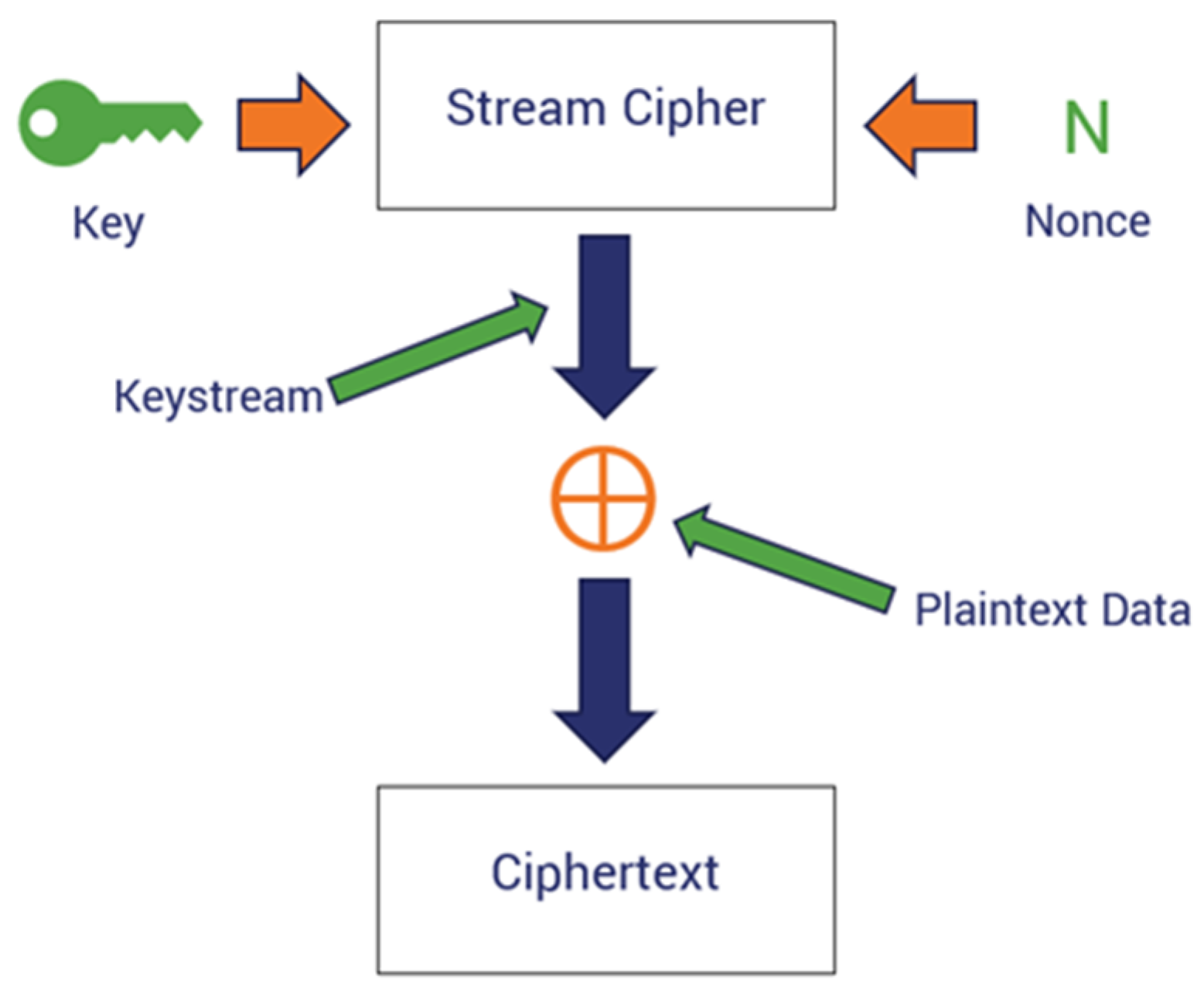
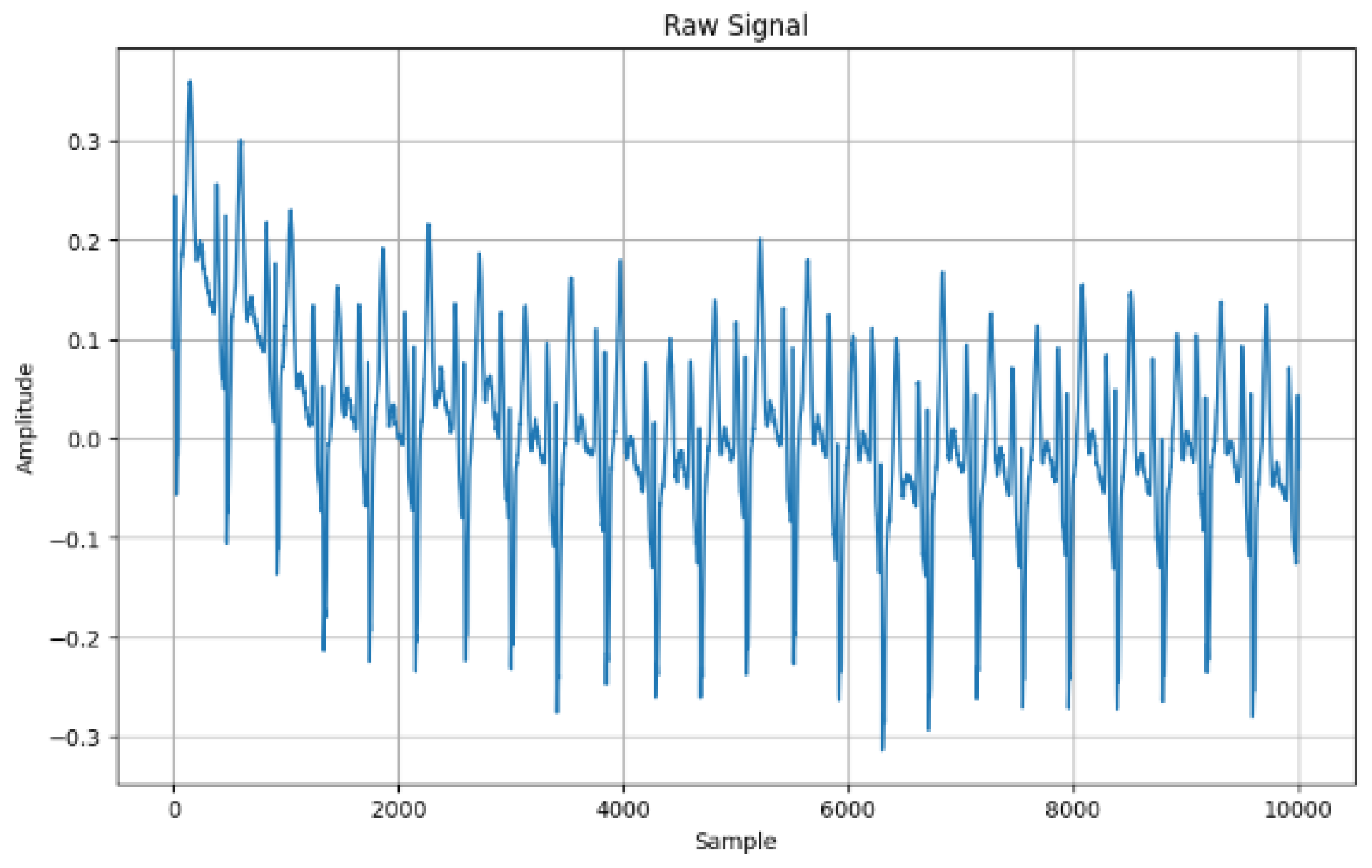
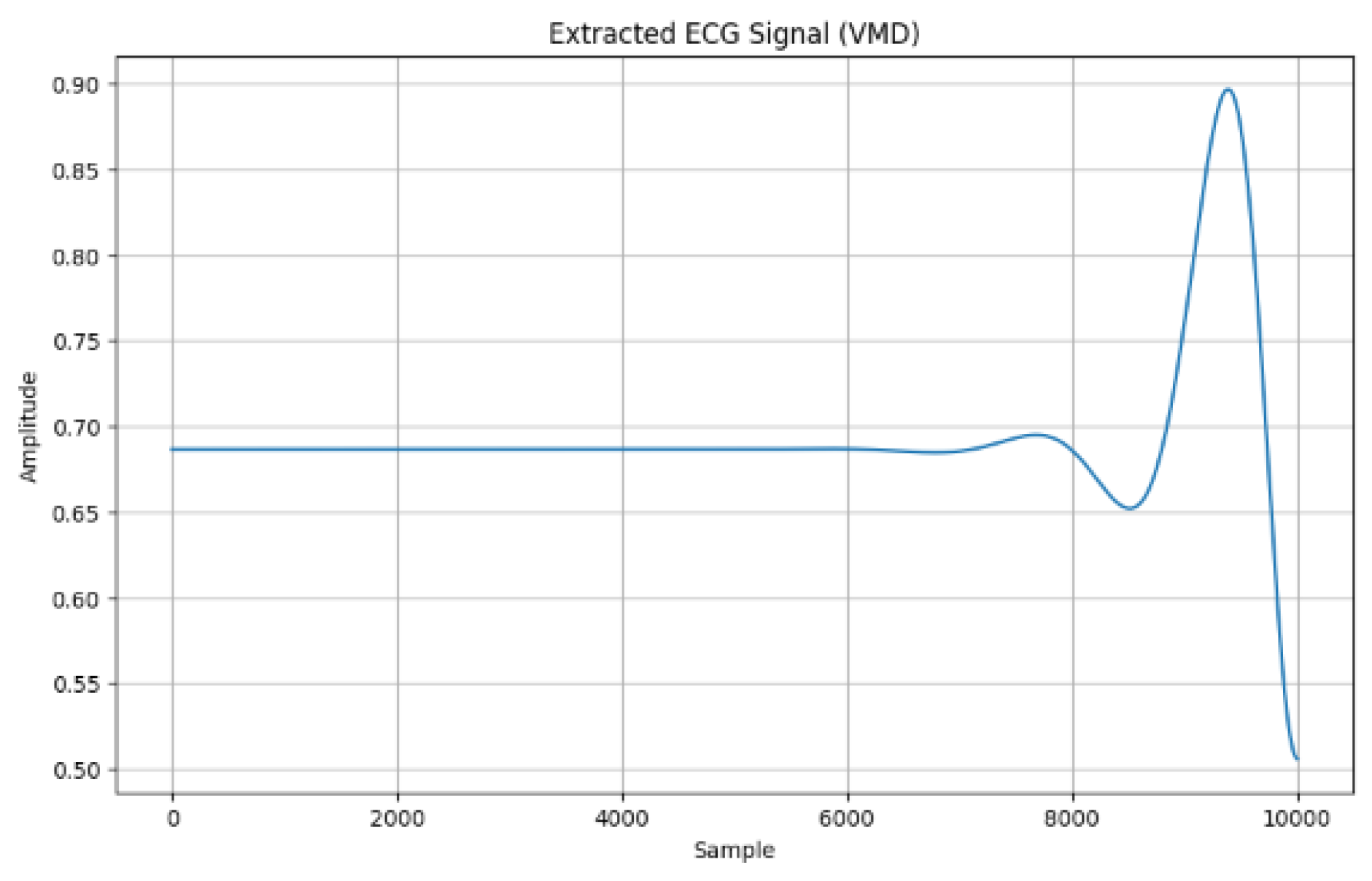


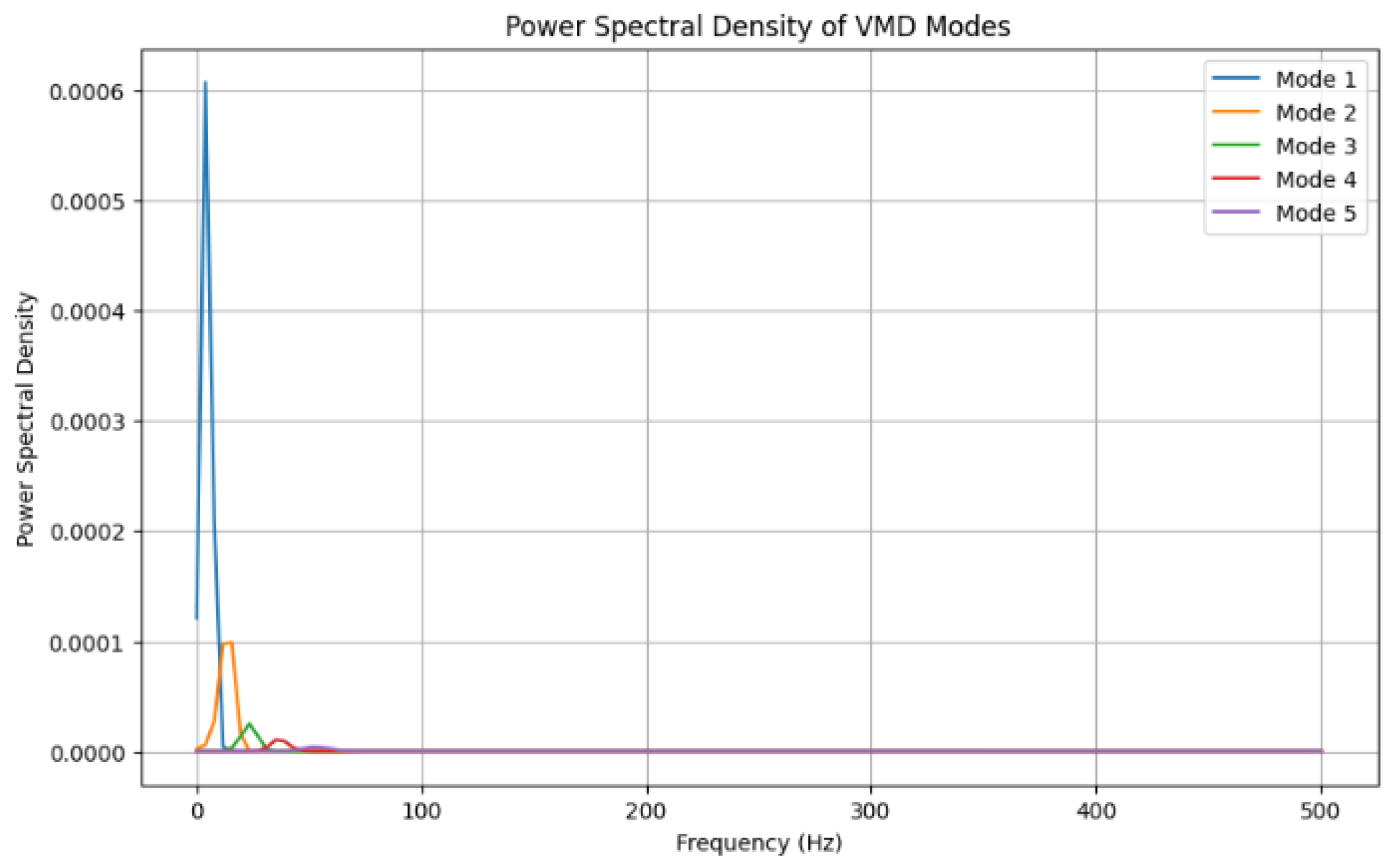




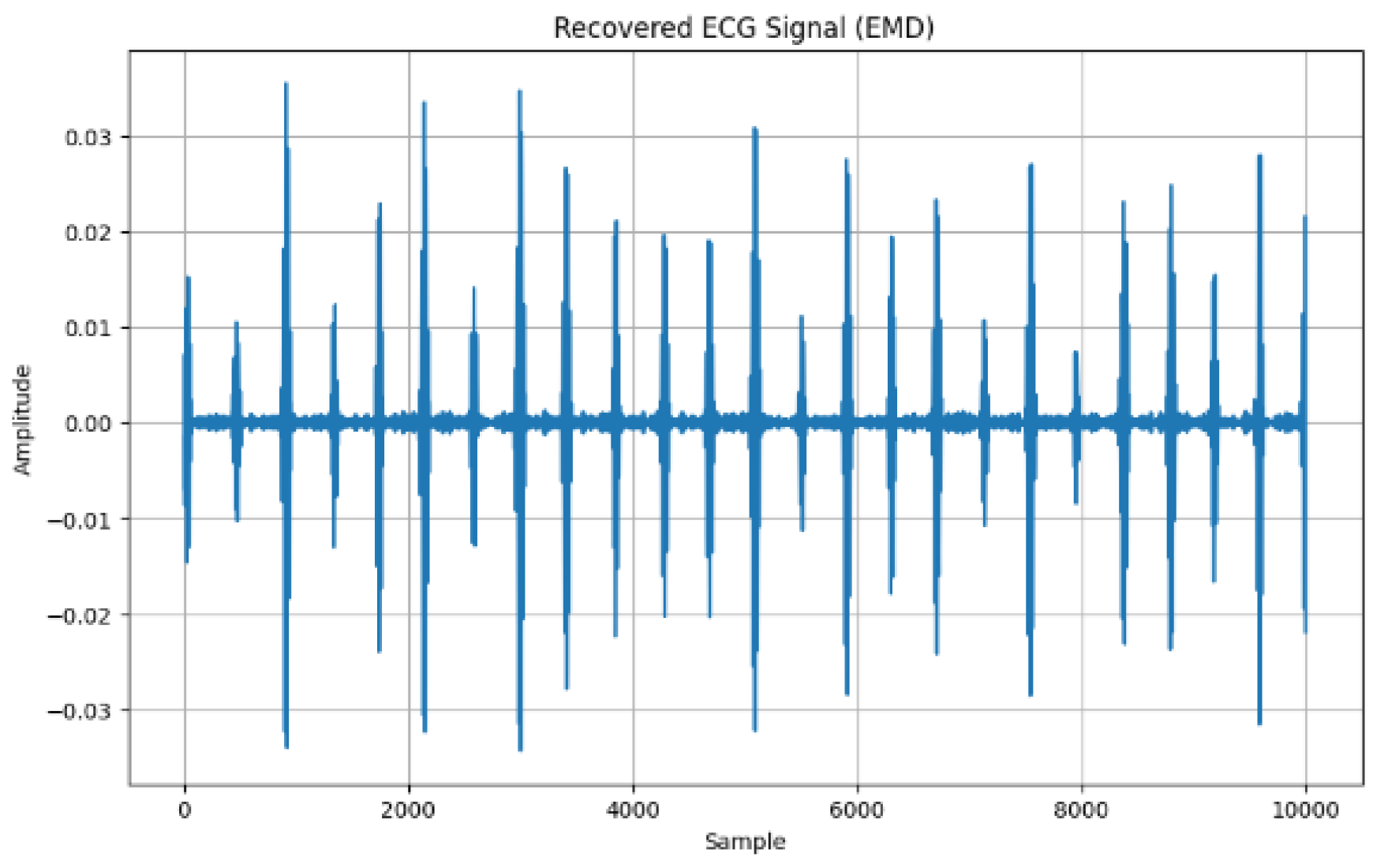
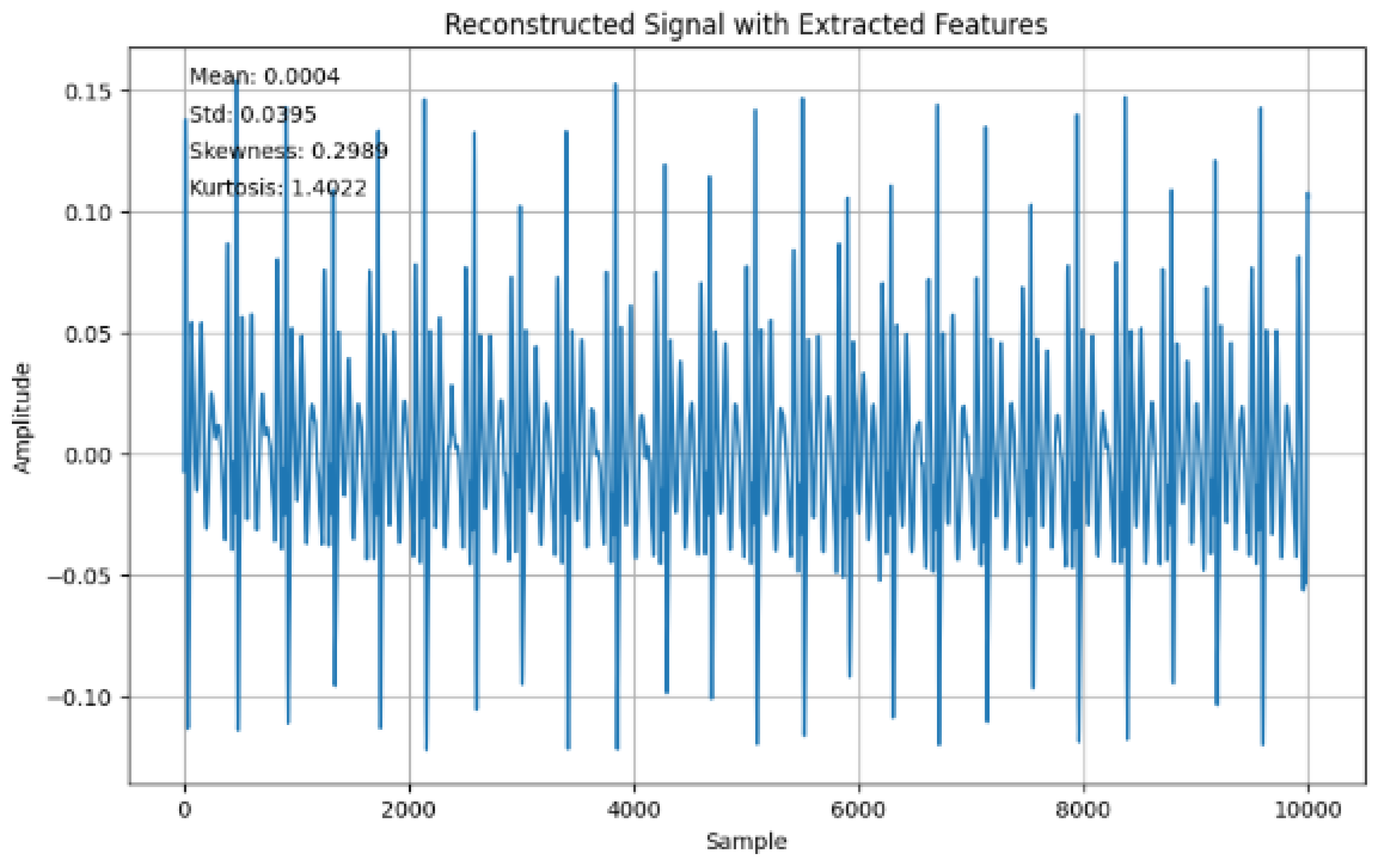

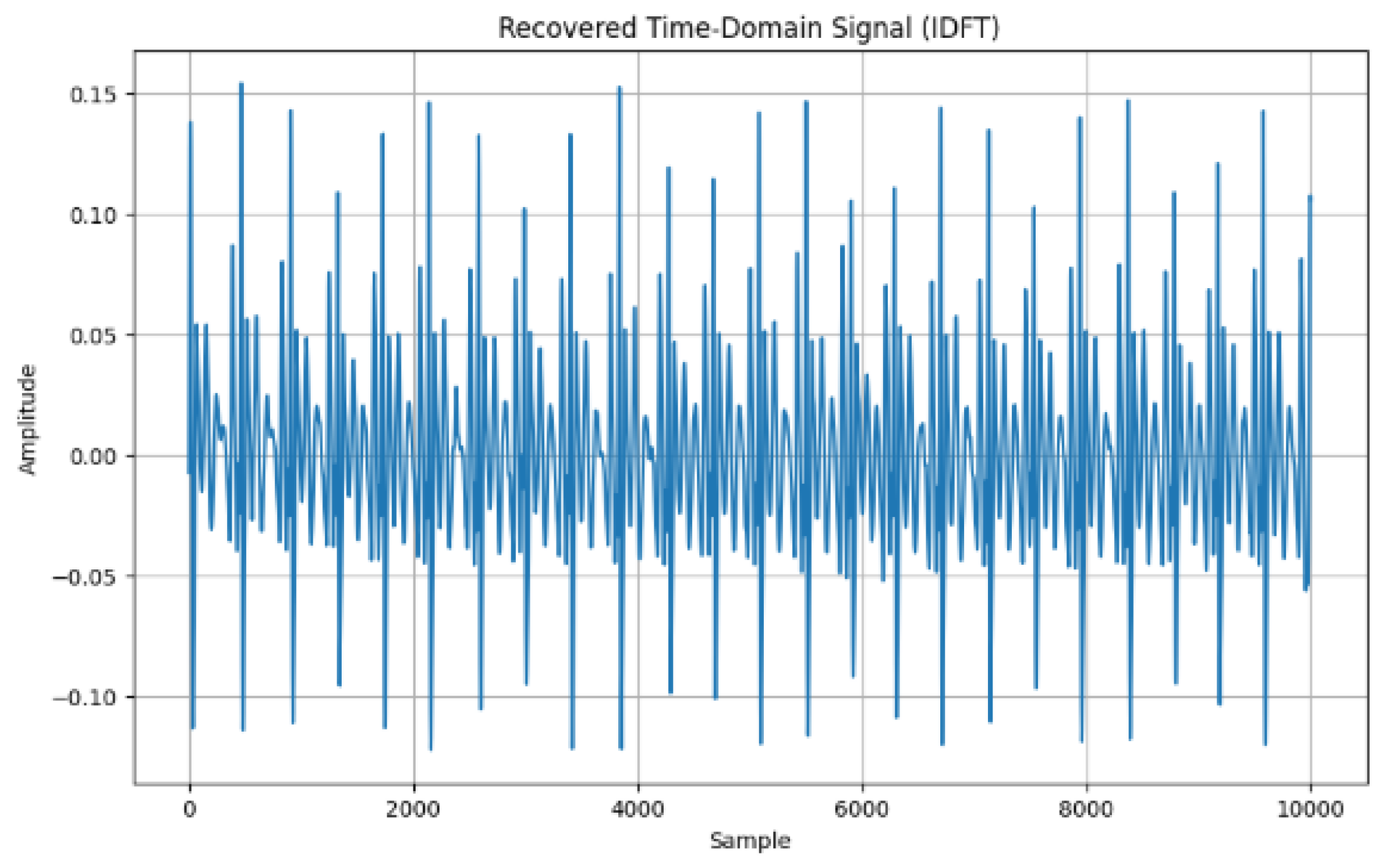
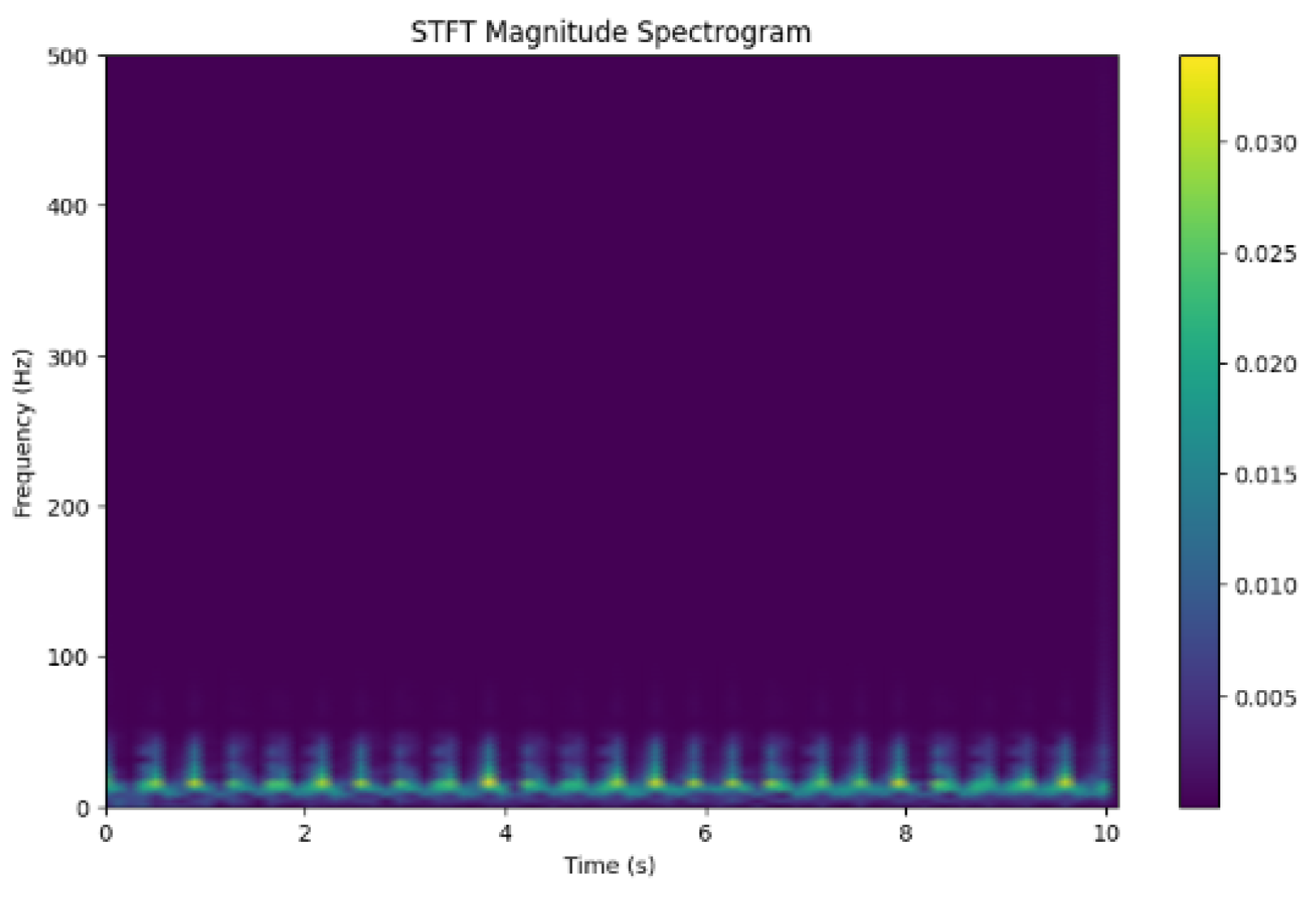
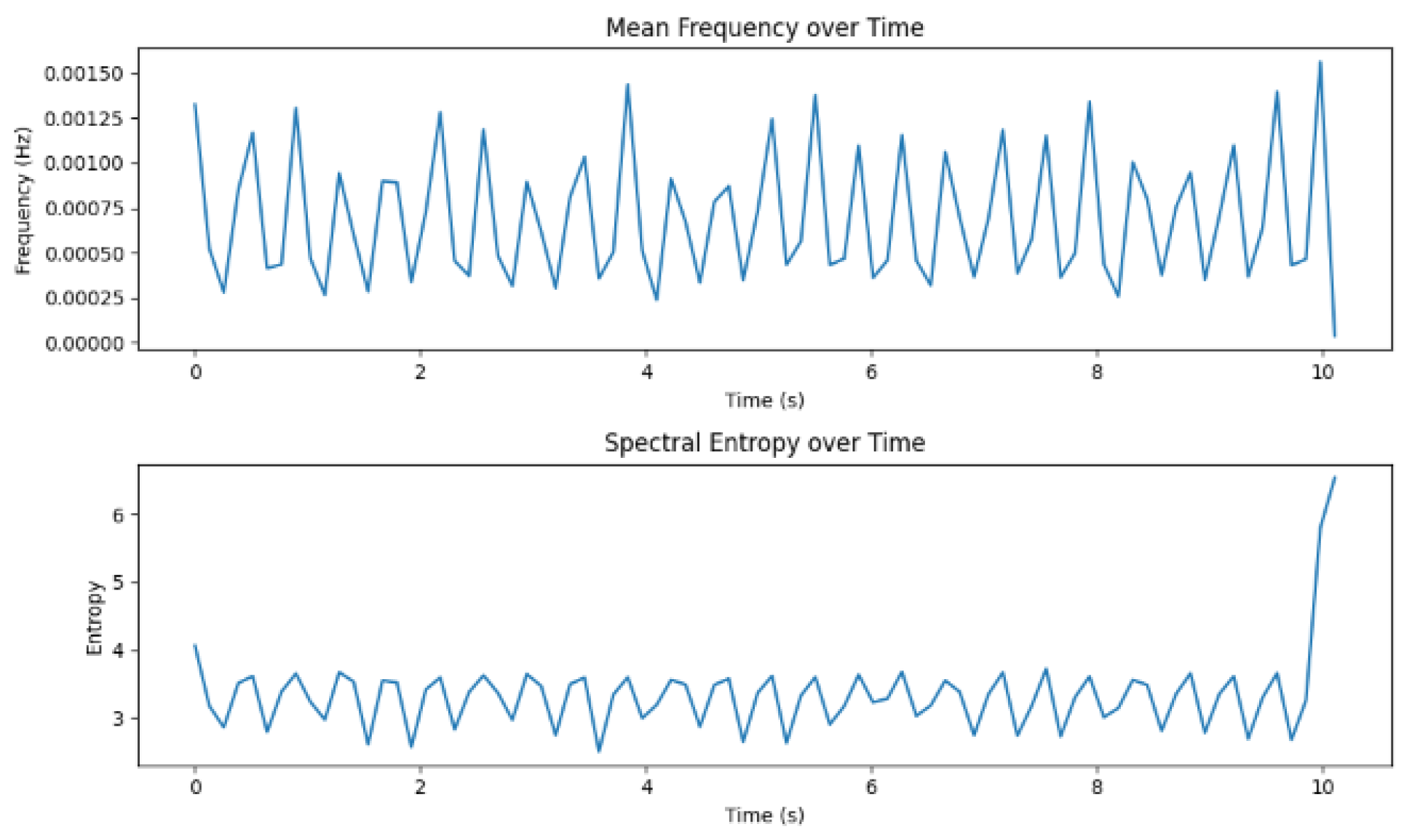

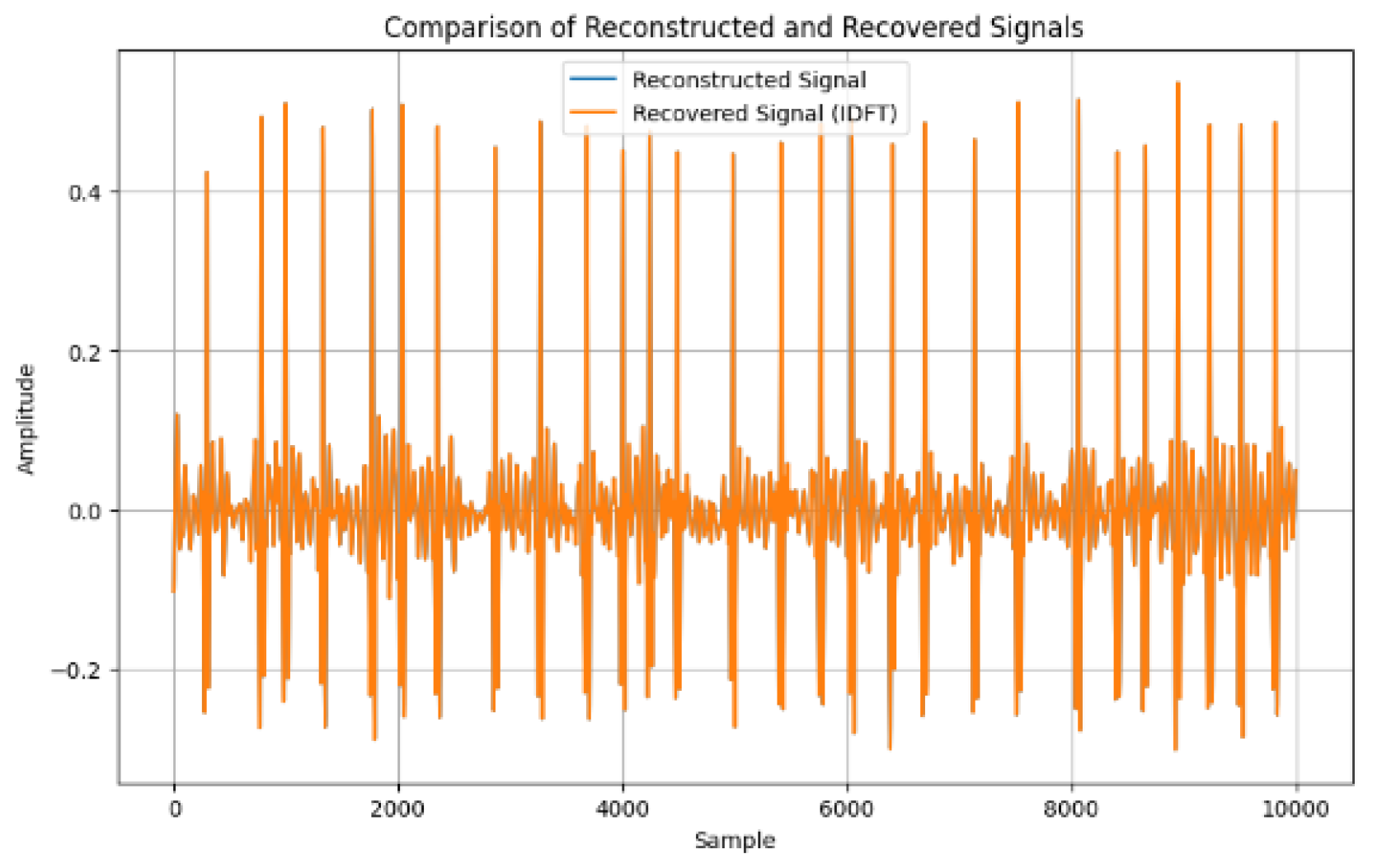
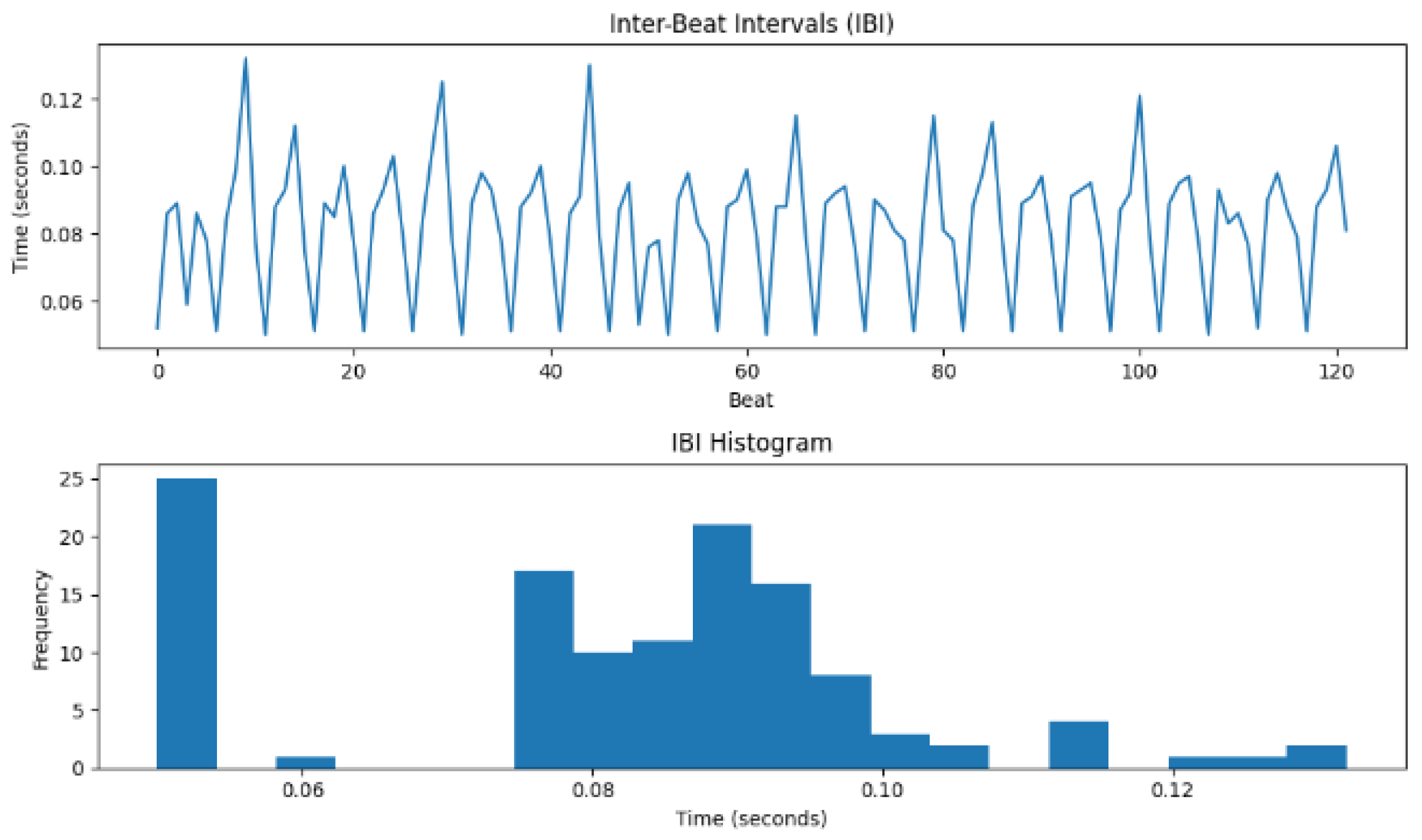
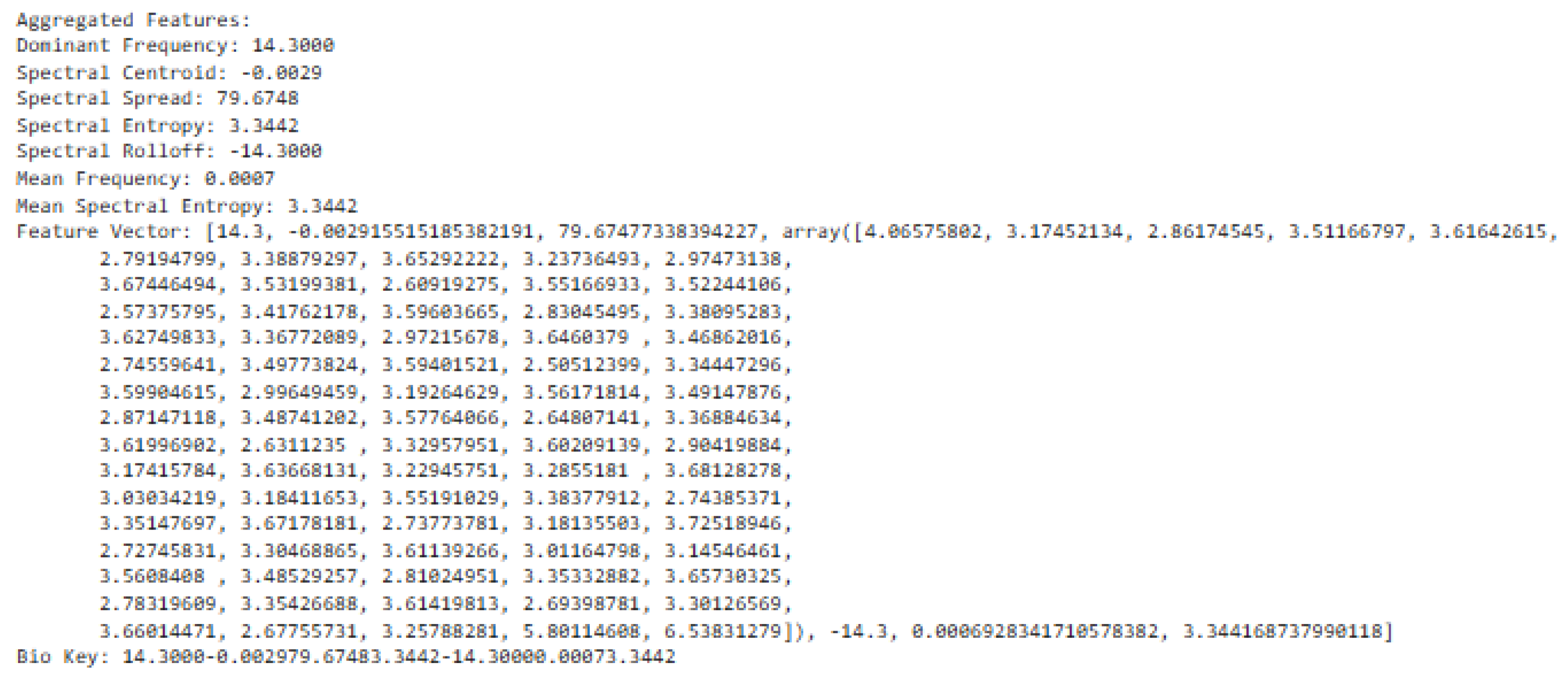


| Aggregated Features | Value | Type of Feature Domain |
|---|---|---|
| Dominant Frequency: | 14.3000 | Frequency domain |
| Spectral Centroid: | −0.0029 | Frequency domain |
| Spectral Spread: | 79.6748 | Frequency domain |
| Spectral Entropy: | 10.2401 | Frequency domain |
| Spectral Rolloff: | −14.3000 | Frequency domain |
| Mean Frequency: | 0.0007 | Time–frequency |
| Mean Spectral Entropy: | 3.3442 | Time–frequency |
| Mean | 0.0004 | Time domain |
| standard deviation | 0.0395 | Time domain |
| Skewness | 0.2989 | Time domain |
| Kurtosis | 1.4022 | Time domain |
| Encryption Scheme | Encryption Time | Decryption Time | Key Generation Time | Total Time |
|---|---|---|---|---|
| ChaCha20 | 9.40 µs | 9.75 µs | 7.85 µs | 27 µs |
| ChaCha | 10.80 µs | 10.98 µs | 7.85 µs | 29.63 µs |
| Salsa20 | 11.45 µs | 11.60 µs | 7.85 µs | 30.90 µs |
Disclaimer/Publisher’s Note: The statements, opinions and data contained in all publications are solely those of the individual author(s) and contributor(s) and not of MDPI and/or the editor(s). MDPI and/or the editor(s) disclaim responsibility for any injury to people or property resulting from any ideas, methods, instructions or products referred to in the content. |
© 2024 by the authors. Licensee MDPI, Basel, Switzerland. This article is an open access article distributed under the terms and conditions of the Creative Commons Attribution (CC BY) license (https://creativecommons.org/licenses/by/4.0/).
Share and Cite
Agbehadji, I.E.; Millham, R.C.; Freeman, E.; Wu, W.; Zhang, X. Fused Multi-Domains and Adaptive Variational Mode Decomposition ECG Feature Extraction for Lightweight Bio-Inspired Key Generation and Encryption. Sensors 2024, 24, 7926. https://doi.org/10.3390/s24247926
Agbehadji IE, Millham RC, Freeman E, Wu W, Zhang X. Fused Multi-Domains and Adaptive Variational Mode Decomposition ECG Feature Extraction for Lightweight Bio-Inspired Key Generation and Encryption. Sensors. 2024; 24(24):7926. https://doi.org/10.3390/s24247926
Chicago/Turabian StyleAgbehadji, Israel Edem, Richard C. Millham, Emmanuel Freeman, Wanqing Wu, and Xianbin Zhang. 2024. "Fused Multi-Domains and Adaptive Variational Mode Decomposition ECG Feature Extraction for Lightweight Bio-Inspired Key Generation and Encryption" Sensors 24, no. 24: 7926. https://doi.org/10.3390/s24247926
APA StyleAgbehadji, I. E., Millham, R. C., Freeman, E., Wu, W., & Zhang, X. (2024). Fused Multi-Domains and Adaptive Variational Mode Decomposition ECG Feature Extraction for Lightweight Bio-Inspired Key Generation and Encryption. Sensors, 24(24), 7926. https://doi.org/10.3390/s24247926









